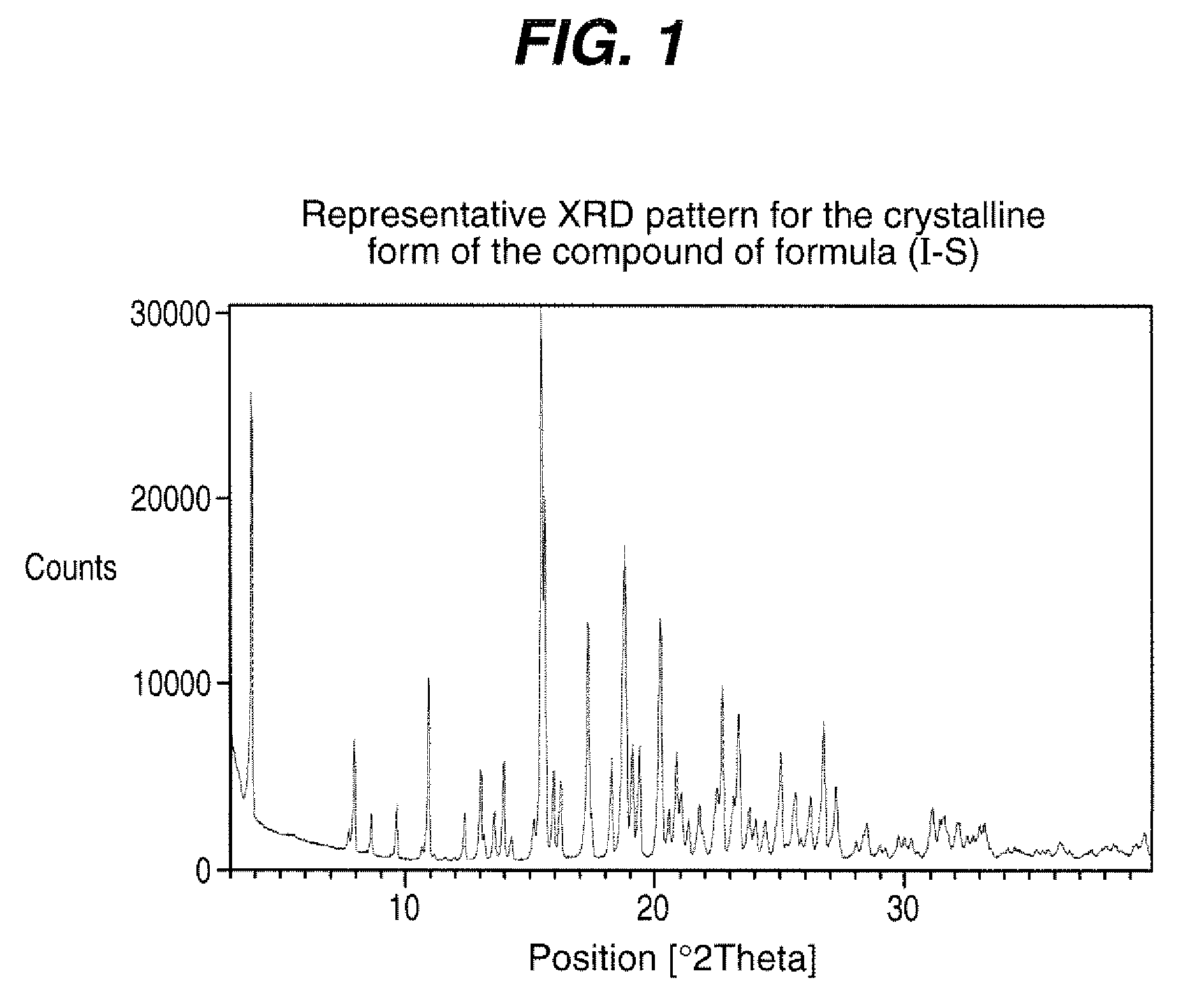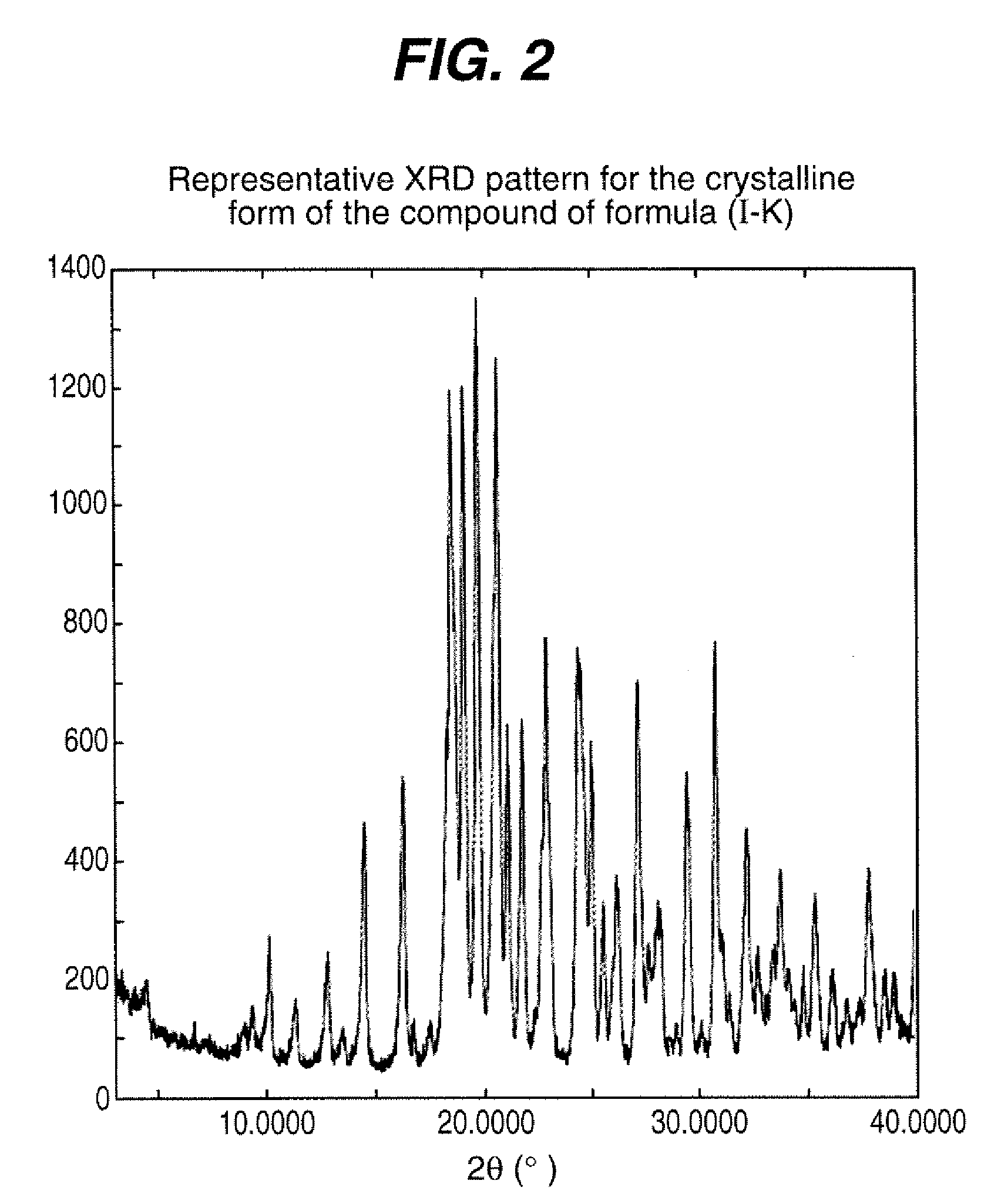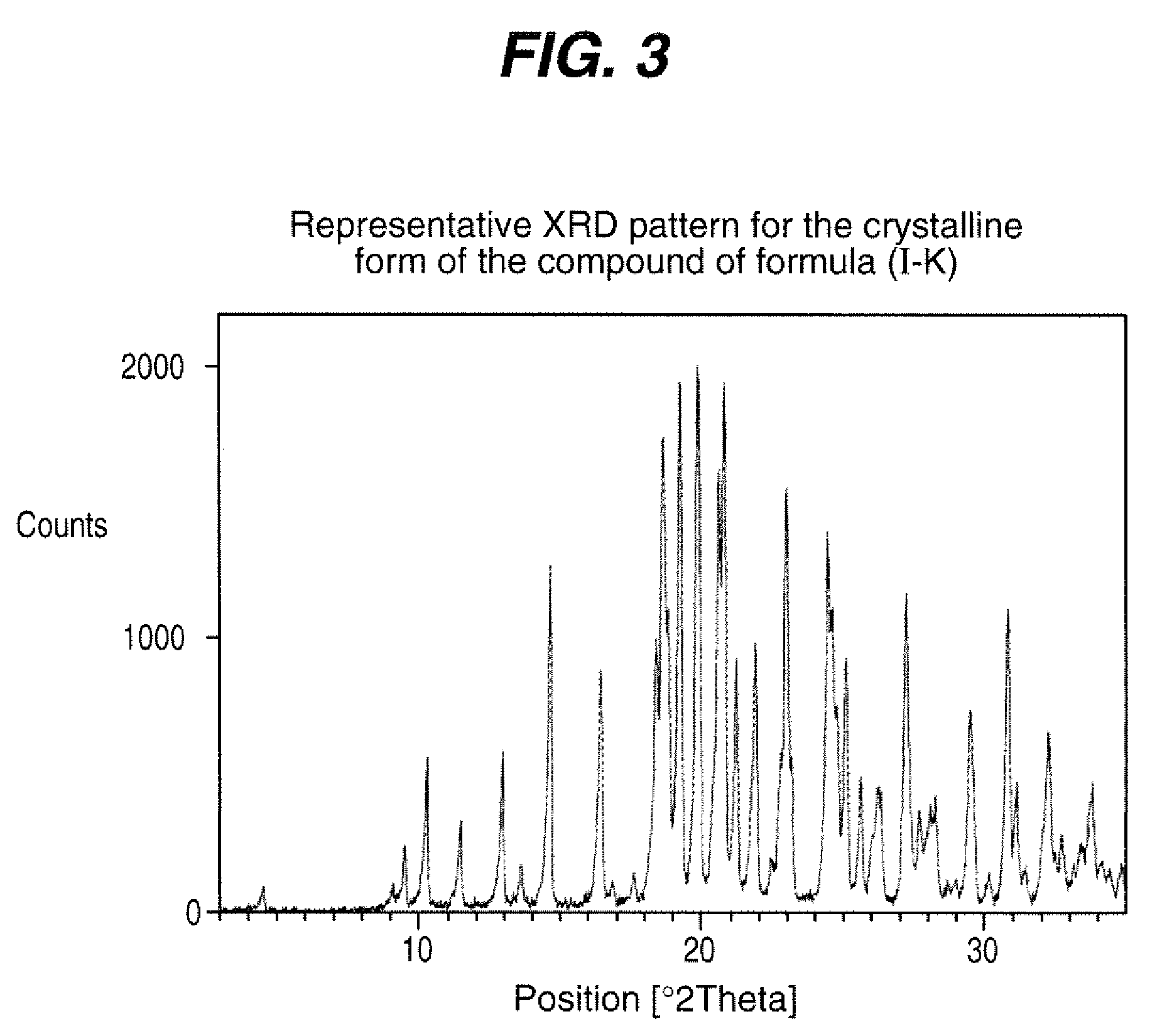Process for the preparation of compounds useful as inhibitors of SGLT
a technology of sglt inhibitor and process, which is applied in the field of preparation, can solve the problems of edema, heart failure, and significant hypoglycemia of antidiabetic agents, and achieve the effects of reducing the risk of strok
- Summary
- Abstract
- Description
- Claims
- Application Information
AI Technical Summary
Benefits of technology
Problems solved by technology
Method used
Image
Examples
example 1
(5-Bromo-2-methyl-phenyl)-[5-(4-fluoro-phenyl)-thiophen-2-yl]-methanone
[0351]
Step A:
[0352]A 250 mL three-necked round bottom flask was charged with 5-bromo-2-methylbenzoic acid (22.5 g, 0.10 mol), CH2Cl2 (100 mL) and DMF (0.25 mL) at ambient temperature (20° C.). Oxalyl chloride (12 mL, 0.13 mol) was added such that the internal temperature was maintained below 25° C. Vigorous gas evolution was observed. The reaction mixture was stirred overnight at ambient temperature, under argon, then the volatiles were removed under reduced pressure. The resulting residue (an acid chloride compound) was dissolved in DCM (50 mL) and set aside under a nitrogen atmosphere.
Step B:
[0353]In a separate 500 mL 3-necked round bottom flask was added AlCl3 (15.0 g, 0.11 mol) and 100 mL of CH2Cl2. The suspension was cooled to −10° C. in an ice bath then 2-(4-fluorophenyl)thiophene (18.2 g, 0.10 mol) was added followed by addition of the mixture prepared as in STEP A above. After 30 minutes the ice bath was ...
example 2
2-(5-Bromo-2-methyl-benzyl)-5-(4-fluoro-phenyl)-thiophene
[0354]
[0355]A 3.0 L four-necked round bottom flask was charged with the compound prepared as in Example 1 above (119 g, 0.317 mol), triethylsilane (148 mL, 0.926 mol), dichloromethane (700 mL) and acetonitrile (700 mL). The resulting mixture was cooled to −8° C. in an ice bath, with stirring, then boron trifluoride diethyl etherate (115 mL, 0.915 mol) was added dropwise, such that the temperature did not exceed 0° C. The resulting mixture was warmed to room temperature and stirred overnight. The resulting mixture was concentrated under reduced pressure, diluted with IPA (1.0 L), filtered and washed with water to yield a solid. Recrystallization of the solid from IPA yielded the title compound as a yellow solid.
example 3
2-(4-Fluoro-phenyl)-5-(5-iodo-2-methyl-benzyl)-thiophene
[0356]
[0357]A 1.0 L four-necked reaction flask was charged with the compound prepared as in Example 2 above (100 g, 276.80 mmoles), sodium Iodide (82 g, 553.59 mmoles) and Copper(I) Iodide (2.6 g, 13.84 mmoles). The resulting mixture was evacuated and purged with argon, then treated with toluene (261 mL), diglyme (56 mL) and N,N′-dimethyl-ethane-1,2-diamine (2.7 mL, 27.68 mmoles) and the resulting mixture warmed to 110° C. overnight. Upon consumption of starting material, the resulting mixture was cooled to room temperature, then filtered through Celite®, washed with EtOAc, and extracted with NH4OH. The organic phase was dried (Na2SO4), filtered and concentrated to yield a solid. The solids were filtered and recrystallized from heptane to yield the title compound as an off white solid (m.p. 107° C.).
[0358](See also, Klaper, A., Buchwald, S. L., “Copper-Catalyzed Halogen Exchange in Aryl Halides: An Aromatic Finkelstein Reaction...
PUM
| Property | Measurement | Unit |
|---|---|---|
| temperature | aaaaa | aaaaa |
| temperature | aaaaa | aaaaa |
| temperature | aaaaa | aaaaa |
Abstract
Description
Claims
Application Information
 Login to View More
Login to View More - R&D
- Intellectual Property
- Life Sciences
- Materials
- Tech Scout
- Unparalleled Data Quality
- Higher Quality Content
- 60% Fewer Hallucinations
Browse by: Latest US Patents, China's latest patents, Technical Efficacy Thesaurus, Application Domain, Technology Topic, Popular Technical Reports.
© 2025 PatSnap. All rights reserved.Legal|Privacy policy|Modern Slavery Act Transparency Statement|Sitemap|About US| Contact US: help@patsnap.com



